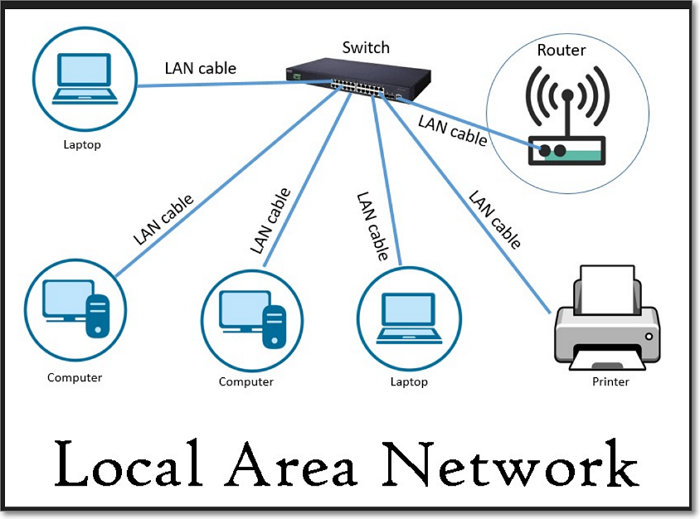What Is a LAN (Local Area Network)? Definition, Types, & Benefits
Most of us may have heard of LAN, yet many people cannot give a clear explanation of it or tell its practice. This article aims to share comprehensive information about what a LAN is.

What Is a Lan?
The full name of Lan is Local Area Network, consisting of a group of computers and peripheral devices confined in an area of a one-kilometer radius. routers, switches, access points, and cables all belong to the LAN, and they can link devices to internet servers and web servers within a changeable area from a small house or office to a large building through ethernet and Wi-Fi technology. Personal computers and workstations can have access to each other and share resources through a single Internet connection or wireless link.
In the 1960s, universities and Institutes were the original users of LANs for recording student grades and experimental data, as well as sharing resources. LANs didn't become prevalent in enterprises until the appearance of Ethernet in 1976. Then, the first commercial user of LANs showed up, that is Chase Manhattan Bank. Since the 1980s, LAN has become the most popular network communication technology.
Two Types of LANs
Since a specific introduction of a LAN has been shown above, here we will continue to talk about its sorts. There are two different types of LANs—they are client/server LANs and peer-to-peer LANs.
Client/Server LANs
Connected to a central server—managing file storage, application or device access, as well as network traffic, a client/server LAN is comprised of several devices (the clients) that can be a personal computer, laptop, or any devices running applications or the Internet. Additionally, there are two methods for the clients to link to the central server: using cables or wireless connections. Thus, most enterprises, organizations, and schools are users of the LAN.
Peer-To-Peer LANs
Compared to client/server LANs, it is impossible for peer-to-peer LANs without a central server to complete heavy workloads because they are much smaller than client/server LANs. On a peer-to-peer LAN, all the devices share equally in the utilization of the Network. In our daily life, most home networks are based on peer-to-peer LANs as they can help devices freely exchange data or files with each other.
The Merits of Using a LAN
A LAN is often used to share data among different devices. Apart from that, other advantages are shown to you in the following:
- Compared to other network communication technologies, LAN seems to be more practical and convenient due to the easy and quick data sharing among all the connected devices.
- LAN users can log in to their accounts and have access to the central server where all the data is stored.
- A LAN can prevent unfamiliar users from accessing the devices which are connected to it, so it is safe for many users to protect their data on computers.
- In addition, the maintenance of a LAN is easy.
Wrap Up
We know that LAN has been widely used in our daily life. Due to its security and convenience, it becomes the first choice for users. Otherwise, you have known its definition, types, and merits from all above. So, are you one of the users of it? The answer must be "Yes".
Related Articles
- What Is Boot Disk? Get A Boot Disk for Abnormal System Startup
- How to Boot Surface from USB? [Efficient Information]
- NAS vs. DAS: Which Is Better & How to Choose
- How to Customize Lock Screen on Windows 10